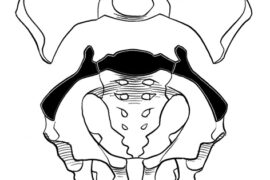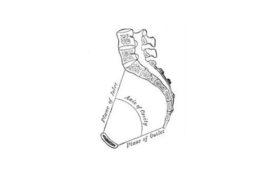More than half of pregnant women are on sick leave during pregnancy, most frequently reported cause is lumbopelvic pain. Facilitating job adjustments and exercise gym may prevent sick leave in late pregnancy
‘Facilitating job adjustments when required might keep more pregnant women in employment. Furthermore, pain locations in pelvic area, disability, lower education and being sick listed due to LPP in mid pregnancy are important risk factors for sick leave in late pregnancy.’
Persistency and/or duration of pain symptoms and widespread pain are predictors of chronic pain
‘This study is unique as it is one of few long-term follow-up studies following women with PPGP of more than 11 years. The results show that spontaneous recovery with no recurrences is an unlikely scenario for a subgroup of women with PPGP. Persistency and/or duration of pain symptoms as well as widespread pain appear to be the strongest predictors of poor long-term outcome. Moreover, widespread pain is commonly associated with PPGP and may thus contribute to long-term sick leave and disability pension. A screening tool needs to be developed for the identification of women at risk of developing PPGP to enable early intervention.’
full text Bergström et al, 2017
Assessment of pain in the lumbopelvic area early in pregnancy and postpartum necessary to identify women with risk of long term pain
‘This unique long-term follow up of PGP highlights the importance of assessment of pain in the lumbopelvic area early in pregnancy and postpartum in order to identify women with risk of long term pain. One of 10 women with PGP in pregnancy has severe consequences up to 11 years later. They could be identified by number of positive pain provocation tests and experience of previous LBP. Access to evidence based treatments are important for individual and socioeconomic reasons.’
Self-reported PGP, pain locations and clinical tests at GW30 do not lead to unfavourable clinical course postpartum
‘PGP prevalence remained unchanged from 12 weeks to one year postpartum (31-30%). Physical functioning (PF) and bodily pain(BP) scores improved markedly from Gravity Week 30 to 12 weeks postpartum, and marginally thereafter. The most afflicted women at GW30 experienced largest improvement.’ ‘PF and BP scores improved markedly from GW30 to 12 weeks postpartum, and marginally thereafter. Despite high PGP prevalence one year postpartum, most women recovered in terms of PF and BP scores. Unfavourable clinical course postpartum did not appear to depend on self-reported PGP, pain locations in the pelvis, or response to clinical tests at GW30.’











